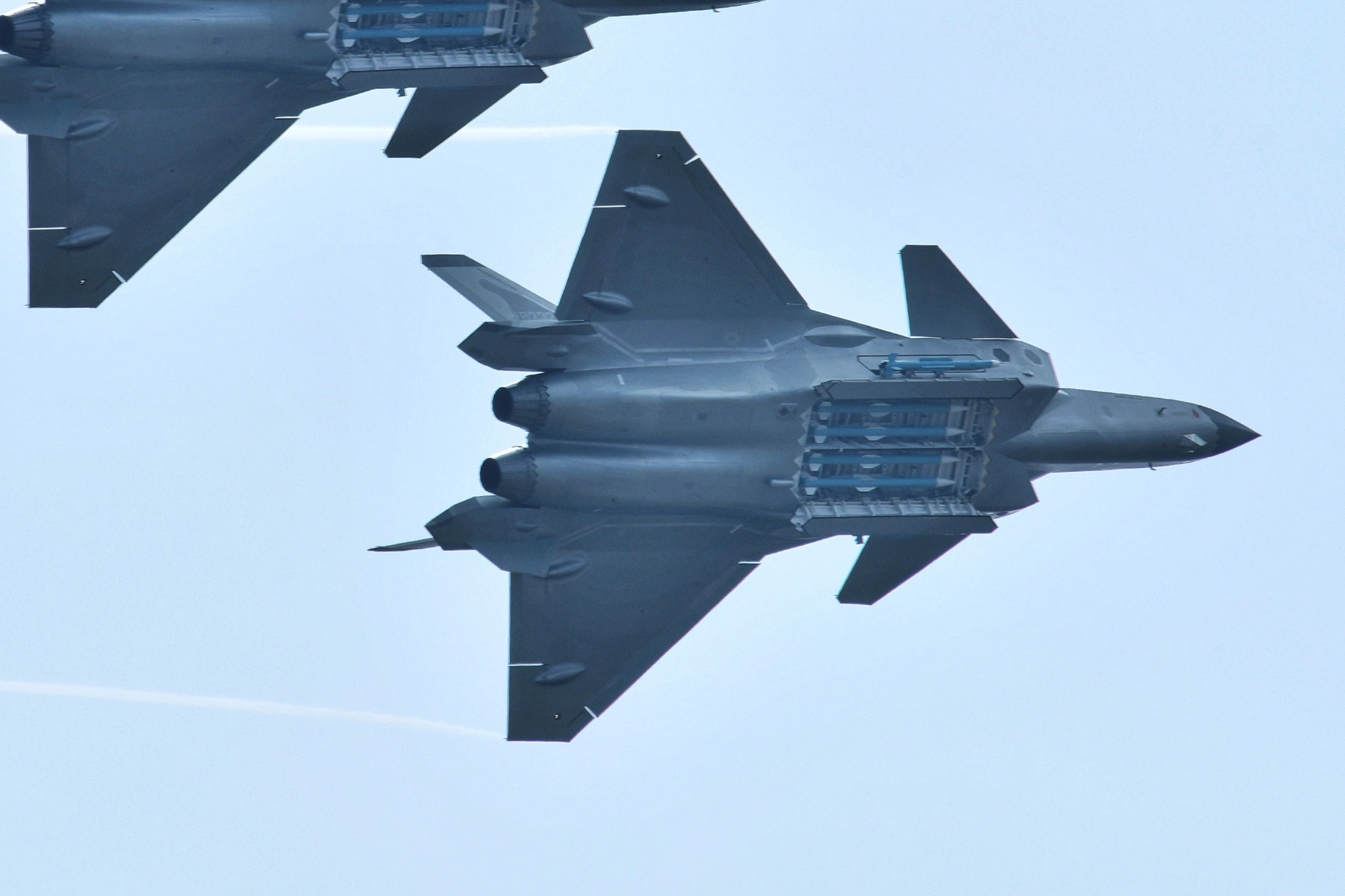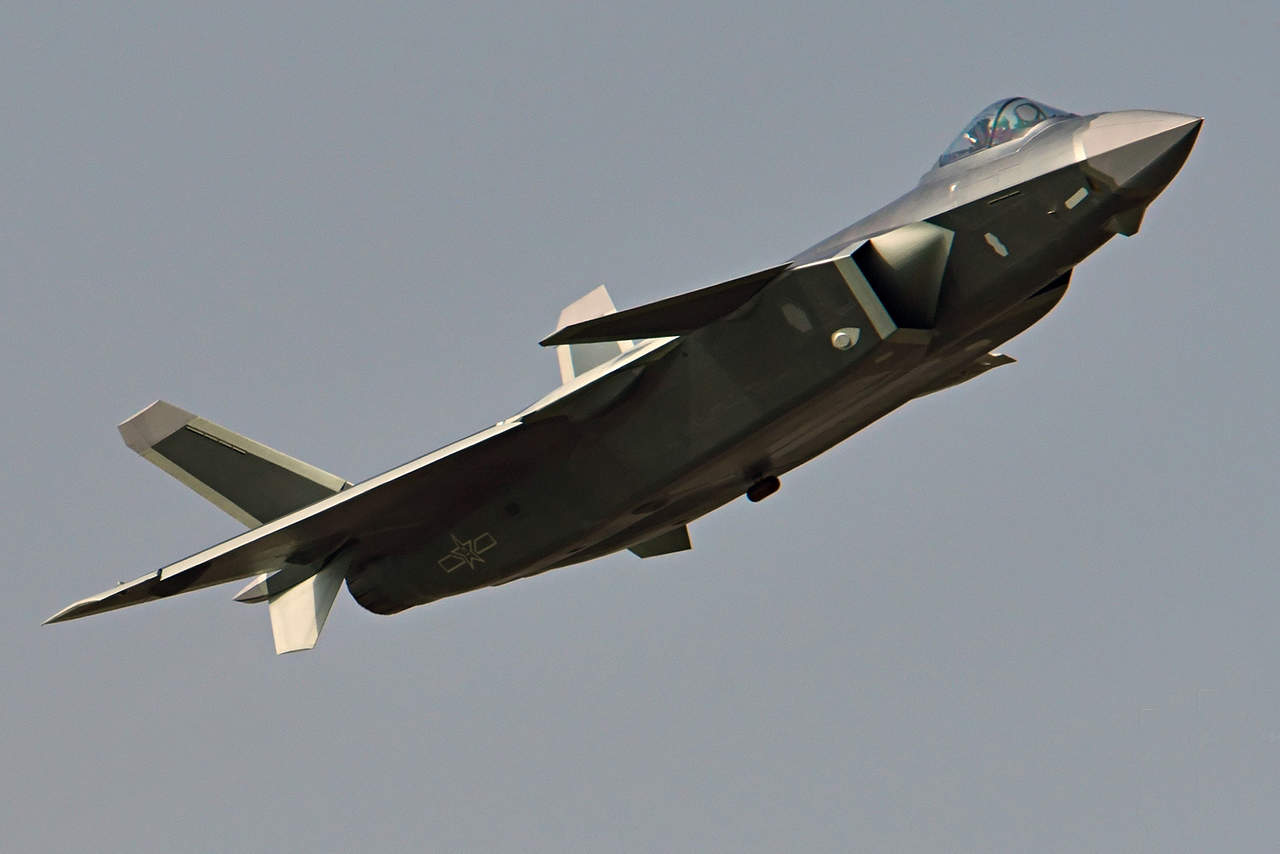J20 Top Speed - The Chgdu J-20 (Chinese: 歼-20; pinyin: Jiān-Èrlíng) is also known as the Mighty Dragon (Chinese: 威龙; pinyin: Wēilóng).
There are three versions of the aircraft: the initial production version of the J-20A, the thrust-vectoring J-20B, and the two-seat hybrid J-20S.
J20 Top Speed

Making China the second country in the world and the first in Asia to produce stealth aircraft.
How Fast Is China's J 20 Fighter Jet?
The J-20 evolved from the J-XX program in the late 1990s. In 2008, PLAAF supported Chgdu Aerospace Corporation's proposal, Project 718; The aircraft proposed by Xian is larger than the J-20.
The chgdu previously used the double-canard configuration on the J-9, its first design which was discontinued in the 1970s, and was used on the J-10.
In 2009, a PLAAF official indicated that the first flight was expected in 2010-11, with service dates in 2019.
On December 22, 2010, the first version of the J-20 underwent high-speed taxi tests outside the Chengdu Aviation Design Institute (CADI).
Meet China Air Force's 'three Musketeers' To Rival U.s. Warplanes
The first model was painted with the number "2001". In May 2012, a second model flew to the CADI facility.
Several changes were made to the third version of the J-20 with the number "2011", which made its first flight in March 2014.
The new airframe featured supersonic inlet (DSI) deflection modifiers, stealth fairings, simplified sub fairings and vertical remodelers. Experts noted that new equipment and devices for multi-role operations, such as integrated target units for guided missiles, as well as six additional passive infrared beams can be seen around the plane.
In December 2015, military observers saw a Low Level Initial Production (LRIP) version of the J-20.
First J 20 Representing F 35 Aggressor Aircraft Unveiled At Nellis Afb
LRIP aircraft have previously identified painted dielectric surfaces for prototypes that contain various resins or radar-coated materials.
In October 2017, Chinese state media reported that the designs of the J-20 aircraft had been completed and were ready for mass production as well as combat operations.
In January 2019, Chinese media reported that a two-seat version of the J-20 was rumored to be under development for use in strategic bombing, electronic warfare and attack roles.
In November 2019, a yellow J-20 was spotted by defense observers during a flight test at the manufacturing plant of Chgdu Aerospace Corporation. The aircraft is equipped with a new type of WS-10 Taihang washers with fire-resistant metal shields to ensure privacy.
Chengdu J 20 Overhyped Or Reality
Chinese media reported that a new version of the J-20, the J-20B, was unveiled on July 8, 2020, and mass production began on the same day. The only change was to equip the J-20B with root control.
There are conflicting reports about the exact type of gin. Analyst Andreas Rupprecht doubts the use of the Russian Gina in the J-20, as he believes the J-20 uses a variant of the WS-10, which he calls the WS-10C. This aircraft, unlike the WS-10 TVC shown on the J-10 at the 2018 China International Aviation and Aerospace Exhibition, has improved stealth, stealth tracking and high reliability, but is not designed to push vectoring.
Analyst Jamie Hunter believes the Chinese-made glider on display at the 2018 Zhuhai Airshow is a new type of glider, which he calls the WS-10B-3.

In January 2021, the South China Morning Post reported that China would replace the Russian J-20 fighter jets with a Chinese stealth fighter called the WS-10C.
Quixplained: A Look At India's Rafale Fighter Jet Vs China's J20 And Pakistan's F16
In June 2021, the Chinese media confirmed the work of the aviation brigade of the J-20A variant, which includes the internal combustion engine of the WS-10C.
Regardless of the replacement, the WS-10C is considered another stopgap solution until the Xian WS-15 is evaluated. In addition, the WS-10C will not be equipped with the J-20B, the thrust-vectoring version of the J-20 that began mass production in 2019, which still requires further testing. In general, Chinese machine manufacturers believe that the WS-10C is similar in performance to the AL-31F,
In January 2021, the Aviation Industry Corporation of China released a computer model of a two-seater version of the J-20 fighter jet to mark the 10th anniversary of the aircraft's first flight.
A February 2021 South China Morning Post infographic shows a two-seat J-20 variant powered by a WS-10C thrust vector.
The Real Top Gun: Could China's J 20 Fighter Beat An F 35 Or F 22 In A Dogfight?
The two-seat design gives the second operator the ability to coordinate attacks and reconnaissance missions with other light aircraft using integrated systems or "loyal wing" and unmanned combat aircraft (UCAVs) attached to ssors. The advantage of the second operator is the ability to better interpret and process large amounts of information that can overwhelm one's limited cognitive abilities, especially in the context of a contested air battle. .
In December 2022, Chinese military experts revealed that the WS-15 was in the final stages of testing and development.
At the end of December, a new version of the J-20 was spotted at the facilities of Chgdu Aerospace Corporation. The new version is painted yellow and differs from the previous J-20 in its aerodynamic design, with a lower profile designed to improve transonic flight performance and maneuverability. The new version of the WS-15 can be used to test weight and thrust vectoring.
The J-20 has a long open fuselage with a fixed nose section and a shapeless tail. Behind the aircraft seat is a low-visibility, supersonic sounder (DSI). Fully movable two-pole canard surfaces are placed behind the intake, followed by trailing edges that merge into a delta wing with swept leading edges. The hindquarters consist of two outward-facing swing fins, a short but deep ventral stroke, and a regular or low-profile gill scoop.
Chengdu J 20 Multirole Stealth Fighter
This requires constant pitch power at a high angle of attack, where tailplanes lose their effectiveness due to stalling. On the other hand, the canard avoids stalling by turning to the angle of attack and can thus maintain control.
Compared to the conventional three-wing design, the canard design is known to provide superior performance, superior turning performance, and improved short-field landing performance.
The canard shape combines front extension and lift to maximize performance. According to the designer, this combination provides 1.2 times the lift rate of the standard delta canard and 1.8 times the lift of the corresponding pure delta configuration. The designer claims that such a combination allows the use of a smaller wing while reducing supersonic drag without compromising the lift-drag characteristics of the aircraft, which are important for the aircraft's turning performance.
The use of foam covers, wide flight control surfaces, and a canard configuration to control the angle of attack indicate the J-20's willingness to operate in high-altitude missions and visual parameters. Senior pilot Lee Gang described the J-20 as having the same maneuverability as the Chengdu J-10, while having significantly better low-observable (LO) performance. The J-20 is a multi-role air-to-air fighter, with the interceptor role being one of the options.
Chengdu J 20 Mighty Dragon 5th Generation Fighter Aircraft
The J-20's avionics are focused on situational awareness through advanced coordination by providing enemy situational awareness through stealth and electronic warfare. The J-20 offers an integrated avionics suite that is a multi-spectrum upgrade capable of providing comprehensive coverage.
Official information about the type of radar used by the J-20 has not yet been made public. Some experts believed that the J-20 used a Type 1475 (KLJ-5) active electronically scanned array (AESA) radar with 1856 transmit/receive units.
Other experts indicate that the J-20 may have 2,000-2,200 transceivers, based on known data about the nose section of the J-20 and the surface area of one transceiver module of the J-16 AESA radar system. .

Post-2011 models and production models feature a revised nose unit with an electronic/infrared targeting system and improved onboard communications, allowing it to link data to other airborne locations. Early warning drones. Six electronic devices known as split diaphragm systems
China's Own 'top Gun'
(similar to EODAS) can provide complete coverage to the pilot with a ssor fusion system that combines radar signals and IR imagery to provide better situational awareness.
A combination of a target pod with an onboard optical sighting system has been reported, similar to the design concept of the Lockheed Martin F-35 avionics suite.
Beijing Science and Technology Star has developed EOTS-86 Electro-Optical Targeting System and Electro-Optical Split Aperture System for J-20 and other PLAAF fighters to detect and intercept stealth aircraft.
The aircraft has an all-digital display with one large color liquid crystal display (LCD), three auxiliary displays and a wide-angle holographic display (HUD).
J 20 Stealth Fighter Thrills Crowds At Airshow China
The main LCD screen measures 610 mm × 230 mm (24 in × 9 in), 650 mm (25.63 in) edge, and has two backlight modes for reverse operation.
The aircraft is equipped with a helmet-mounted display (HMD) that displays combat data from inside the pilot's helmet and the missile launcher from a high-angle view of the barrel.
The main weapon bay is capable of deploying long-range air-to-air missiles (AAM; PL-12, PL-15 - PL-21) and precision-guided munitions (PGM; LS-6/50, LS -6). /100),

And two small weapons on the side behind the flight deck are for the short-range AAM (PL-10). These side sensors allow the doors to be closed before the missile is fired, increasing stealth and allowing the missile to be launched in the shortest possible time.
J 20 Vs F 22: How China's Chengdu J 20 'powerful Dragon' Compares With Us' Lockheed Martin F 22 Raptor
The J-20 does not have an internal automatic cannon or a rotary cannon, this aircraft is not intended to be used in long-range combat with other aircraft, but is intended to engage long-range missiles such as the PL-15 and PL-21.
The J-20 can use air-to-air missiles for targeting
E bike top speed, spark trixx top speed, top speed exhaust, top speed internet, speed queen top loader, high speed bimini top, electric bike top speed, top speed boats, range rover top speed, top speed golf, electric motorcycle top speed, volvo xc90 top speed
0 Comments